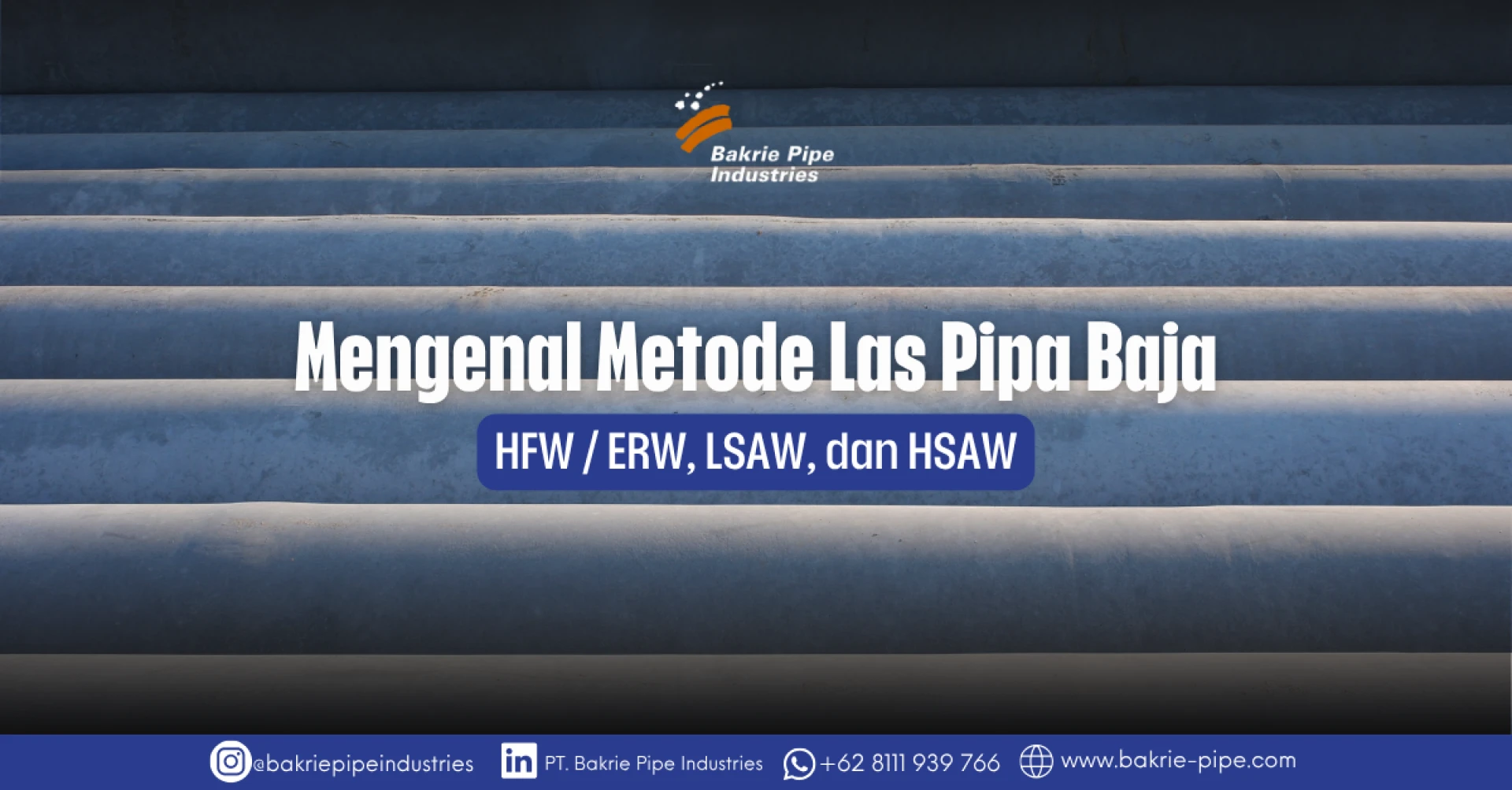Hello Pipe Enthusiasts, and welcome to the latest edition of #BPIPipeInsights!
In our previous article
How Is Steel Pipe Manufactured? Discover Every Stage from Raw Material to Final Delivery, we explored the full journey of steel pipe production. This time, we’re focusing on one of the most critical stages in that process: welding. At Bakrie Pipe Industries, we apply three major welding methods: High-Frequency Welding / Electric Resistance Welding (HFW/ERW), Longitudinal Submerged Arc Welding (LSAW), and Helical Submerged Arc Welding (HSAW).
All three techniques can be applied across various industries, including water distribution, fire protection, foundation piling, structural works, oil and gas transmission, and general infrastructure. What sets them apart lies in the weld seam orientation, joining process, and the appearance and structure of the welded area. Let’s break them down.
1. HFW / ERW (Electric Resistance Welding / High-Frequency Welding)This method uses high-frequency electrical current to heat and fuse the steel edges without any filler metal. The weld seam runs longitudinally along the center of the pipe body.
Weld characteristics:
- Smooth weld bead and clean inner surface
- Suitable for thin-to-medium wall thickness
- Commonly used for small to medium diameters
- Known for efficient, high-speed production
At Bakrie Pipe Industries, this method is the most widely implemented, trusted by leading national and international clients across a wide range of projects.
2. LSAW (Longitudinal Submerged Arc Welding)Here, flat steel plates are formed into a straight cylinder and welded along the longitudinal axis using submerged arc welding, with filler wire and flux. Welding is applied both internally and externally for added strength.
Weld characteristics:
- Straight longitudinal weld seam
- Double weld pass: inside and outside
- Suitable for thicker walls and large-diameter pipes
- Delivers deep weld penetration with dense structure
This method is used at Bakrie Pipe Industries for critical applications, such as high-pressure fluid transmission, offshore construction, and structural pipelines.
3. HSAW (Helical Submerged Arc Welding)In this method, a continuous strip of steel is spirally formed and welded as it wraps helically around the pipe axis. The seam follows a spiral path from end to end.
Weld characteristics:
- Spiral weld line along the pipe body
- Flexible for extended pipe lengths
- Accommodates extra-large diameters
- Efficient use of steel for oversized applications
At Bakrie Pipe Industries, we’ve produced HSAW pipes up to 64 meters in a single length, perfect for long-distance water mains or large-scale regional pipeline networks.
Steel Pipe Welding Solutions for Every ProjectEach welding method brings unique advantages based on structural needs, design preferences, and project scale. At Bakrie Pipe Industries, we offer all three in one roof, backed by rigorous quality control, ultrasonic testing, hydrostatic inspections, and internationally certified standards.
With over 60 years of experience in the steel pipe industry, Bakrie Pipe Industries remains a trusted partner for delivering durable, high-performance pipes for construction, energy, and infrastructure projects nationwide.
Contact our Marketing & Sales team via WhatsApp today and discover the best steel pipe solution from Bakrie Pipe Industries for your next project.
